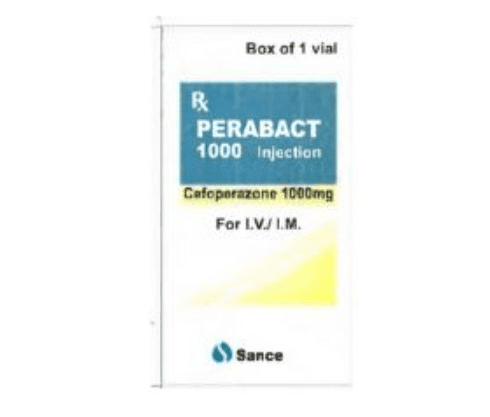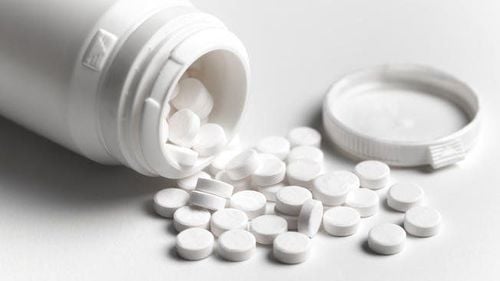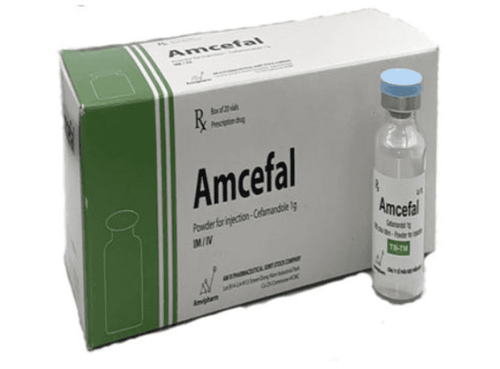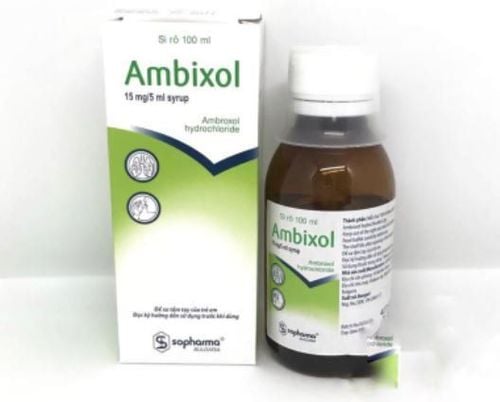This is an automatically translated article.
Ceftriaxon EG medicine 1g/10ml contains the main ingredient is Ceftriaxon. The drug is effective in the treatment of serious infections caused by microorganisms sensitive to Ceftriaxone.
1. What is Ceftriaxone?
Ceftriaxone belongs to the group of drugs used to treat parasites, infections, viruses and fungi. The drug is prepared in the form of a powder for injection, packing: Box of 1 vial with 1 ampoule of 10ml distilled water for injection. The ingredient Ceftriaxone in the drug Ceftriaxone EG 1g/10ml is a 3rd generation cephalosporin antibiotic with broad-spectrum bactericidal effect. The mechanism of action of the drug is inhibition of bacterial cell wall synthesis. Ceftriaxone is stable to most beta-lactamases of Gram-positive and Gram-negative bacteria.2. Indications for use of Ceftriaxone EG 1g/10ml
Ceftriaxon is indicated in the treatment of serious infections such as:
Pneumonia; Acute bronchitis ; Infections of the kidney and urinary tract - genitourinary; Sepsis; Inflammation of the endocardium; Meningitis ; Infections of bones, soft tissues, joints, skin and wounds; Abdominal infections; Prevention of infection during surgery.
3. Dosage and how to use Ceftriaxone
3.1. Dosage of Ceftriaxone Adult and children > 12 years old:
The usual dose of Ceftriaxone is 1 - 2g/day, used 1 or 2 divided equally. In severe cases, the dose of Ceftriaxone can be increased to a maximum of 4g/day; Prophylaxis of infection during surgery: Use a single dose of 1g intravenously from 30 minutes to 2 hours before surgery; Treatment of uncomplicated gonococcal infections: Intramuscular injection with a single dose of 250 mg. Dosage for children < 12 years old:
The usual dose is 50 - 75mg/kg/day, taken 1 or 2 divided equally. Maximum dose 2g/day. Treatment of meningitis: The starting dose is 100mg/kg, using no more than 4g/day. Then adjust the dose appropriate to the current medical condition. The duration of treatment with Ceftriaxone is 7-14 days. Renal impairment: Ceftriaxone dose should not exceed 2g/day in patients with creatinine clearance <10ml/min. 3.2. How to use Ceftriaxone Intravenous:
Mix Ceftriaxone intravenous solution: Dissolve 1g of Ceftriaxone in 10ml of distilled water for injection. Inject slowly over 2-4 minutes. Inject Ceftriaxone directly into a vein or through a solution line. Solution for infusion:
Dissolve 2g of Ceftriaxone powder in 40ml of calcium-free infusion solution. The infusion time is at least 30 minutes. Note: Ceftriaxone must not be mixed with solutions containing calcium, Amsacrin, Vancomycin, Aminoglycosides or Fluconazole.
4. Contraindications to Ceftriaxone
Contraindicated to use Ceftriaxone in the following cases:
People who are sensitive to the ingredients in Ceftriaxone, Cephalosporin and Beta-lactam antibiotics; Ceftriaxone should not be used concurrently with calcium-containing products.
5. Ceftriaxone drug interactions
Possible interactions if Ceftriaxone is used concurrently with the following drugs:
Gentamicin, Furosemide and Colistin: Increases the possibility of nephrotoxicity; Probenecid: Increased plasma concentrations of Ceftriaxone; Calcium or preparations containing Calcium, alcohol; Anticoagulants. To ensure the safety and effectiveness of treatment, patients should inform their doctor about all medications, dietary supplements, and current medical conditions.
6. Side effects of the drug Ceftriaxone
When using Ceftriaxone, patients may experience the following side effects:
Common: Diarrhea, skin rash, itching; Uncommon: Phlebitis, drug-induced edema, eosinophilia, thrombocytopenia and leukopenia, urticaria. Rare: Headache, dizziness, anaphylaxis, agranulocytosis, pseudomembranous colitis, coagulopathy, erythema multiforme, hematuria, increased serum creatinine.
7. Notes when using Ceftriaxone and how to store it
Need to be careful when using Ceftriaxone in the following cases:
Pregnant women: Safety for pregnant women has not been determined. Therefore, it should be avoided in pregnant women, especially in the first 3 months. Lactation: Ceftriaxone is excreted in breast milk in low concentrations. Caution should be exercised when Ceftriaxone is administered to a nursing woman. Ceftriaxone medicine causes headache, dizziness, so it will affect the ability to drive and use machines. Therefore, it should be used with caution in this case. Before taking Ceftriaxone, a history of hypersensitivity reactions to Cephalosporins, penicillins or any other drug should be investigated. Patients with renal impairment must carefully consider the appropriate dose. Storing Ceftriaxone: Ceftriaxone should be stored at a temperature below 30 degrees Celsius, away from direct sunlight, and out of the reach of children and pets. Do not use Ceftriaxone after the expiry date printed on the package. Above is information about uses, dosage and precautions when using Ceftriaxone. To ensure safety for your health and maximize the effectiveness of your treatment, you need to take Ceftriaxone exactly as directed by your doctor.
Please dial HOTLINE for more information or register for an appointment HERE. Download MyVinmec app to make appointments faster and to manage your bookings easily.













